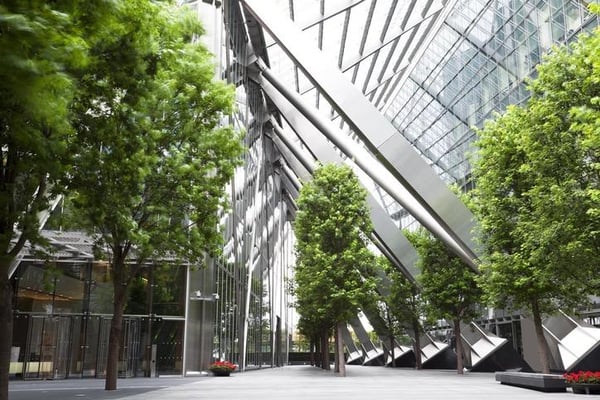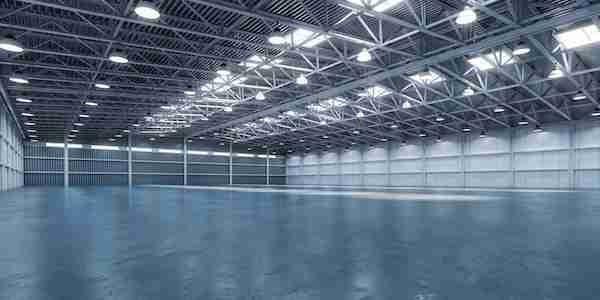Eliminating Condensation Problems in Metal Buildings
While rot and termites don't pose a threat to metal buildings, metal buildings can still suffer damage from excessive moisture.
(Check out our article Are Metal Buildings Cheaper Than Wood?)
Damp insulation is less effective at regulating temperatures in a metal building and may promote mildew growth, making the building's interior smell musty and potentially contribute to allergy or asthma problems.
Wet insulation that's in contact with metal surfaces can cause corrosion, even on surface-treated metals.
The panels and fasteners may begin to rust, leading to premature failure of these materials.
So why do metal buildings sweat?
How can we prevent or stop our metal buildings from sweating?
In the article below, we examine those questions.
Table Of Contents
- Why Do Metal Buildings Sweat?
- Types Of Condensation
- 5 Ways To Prevent Condensation In Metal Buildings
- Condensation Is Harmful But Preventable
Why Do Metal Buildings Sweat?
Condensation occurs when there's more moisture than the air can hold.
Warm air can hold more moisture than cold air, but as the warm air cools, it reaches saturation and water droplets form.
Ceiling drips and surface moisture are caused when warm moist air comes in contact with the cooler roof-line or walls of your metal building.
High interior humidity levels is a common cause of condensation. It usually comes from your heating and air conditioning system, the way yo use your building, improper construction process techniques, human respiration, or oil or gas-fired heaters.
All of those things give off the moisture that can lead to condensation.
Condensation tends to occur more often in climates where the temperature often falls below 35 degrees Fahrenheit for an extended period.

Types Of Condensation
There are two types of condensation; visible and concealed.
Visible condensation occurs on surfaces such as water, frost, and ice. You may see it on insulation vapor retarders, skylights, cold water pipes, and cooling ducts.
Concealed condensation is more damaging and difficult to deal with. It occurs when moisture is passed into the interior of the building and condenses on a surface that has a temperature at or below the dew point.
There are many ways moisture can enter the buildings envelope, including:
- Improper vapor retarder selection
- Improper installation of the vapor retarder
- Improper insulation installation
- Leaks in the roof
- Lack of a structural air barrier
- An incorrect vapor pressure differential between the inside and outside of the building

Concealed condensation can be seen as damp spots, stains, mold, and mildew on walls or ceilings. It may show up as delamination of laminated surfaces, bubbles or blisters in asphalt surfaces, peeling paint, or damp insulation.
5 Ways To Prevent Condensation In Metal Buildings
1. Use Proper Insulation
Insulation that regulates the temperature inside of a metal building helps reduce condensation.
It keeps the interior temperature from fluctuating as much between day and night, limiting the amount of dew deposited on surfaces overnight.
It also prevents warm, moisture-laden air from reaching the metal surfaces on the interior of the building.
For insulation to work effectively, it needs to be continuous. Placing it only between metal studs will allow water vapor to accumulate between the panels and seep into the insulation.
2. Install Vapor Barriers
Vapor barriers will also help protect your metal building from condensation.
This barrier helps to keep moisture from the outside from penetrating into the building.
Sealing the building envelope is what helps keep moisture to a minimum. That can't be stressed enough.
Many vapor barriers are also designed to serve as radiant heat barriers, addressing the temperature differential and humidity at the same time.
Windows, doors, foundation sills, and side/end laps need thorough sealing to keep moisture out.
3. Ventilate The Interior
There are countless reasons moisture can occur inside of your metal building, increasing the indoor humidity.
In agricultural buildings, for example, livestock gives off a lot of moisture as they breathe, sweat, and eliminate.
Gas and oil-based heaters also raise the levels of humidity.
That's why it's important to encourage air exchange between the interior and exterior to help keep things dry.
Opening a window, running a fan or AC compressor, or installing screened vents or louvers on the walls and/or roof are great ways to encourage the exchange.
Heaters should always vent to the outside of the building.
Dehumidifiers can help in certain situations, but they can be costly and require good drainage.
4. Look Up For Condensation Troubles
If the insulation on the underside of the roof is sagging and not in full contact with the metal, this is a great place for hidden condensation to accumulate and cause trouble.
Roof leaks or moisture seeping in through penetrations can cause a lot of moisture to build up in the ceiling insulation over time.
This type of problem can occur when flashing is missing, incorrectly installed, or damaged.
5. Prevent Water From Seeping Below
In regions where excess moisture can seep up from the ground, having gravel, crushed rock, or other drainage materials under the concrete slab can help limit condensation around the base of the structure.
Roof runoff and other sources of water should be drained away and diverted from the foundation as well.
You can also place a vapor retarder between a subfloor and the ground slab.

Condensation Is Harmful But Preventable
Although metal buildings have countless benefits compared to other construction options, nothing is perfect.
Metal structures are susceptible to sweating, which can lead to further problems like rust and erosion.
However, if you follow the steps listed above, condensation is extremely preventable.
Proper insulation, ventilation, and sealing your metal building properly is key in the fight against condensation.
If you take care of those things, your metal building can last for generations.
To see how CDMG can help you make the most out of your metal building, or design you a brand new metal building, click on the link below.
If you enjoyed this article, you should give these a read:
- The Best Options For Insulating A Metal Building
- How To Ensure The Quality Of Your Commercial Metal Building
- Steel Building Benefits For Modern Construction Need

 I'm Ben Sparhawk, the Content Writer and Marketing Account Manager for CDMG. I write to showcase the work that CDMG does and everything related to the pre-engineered metal building industry as well as their engineering capabilities. When I'm not working on content, you can find me spending time with my wife and children. You can also find me in the gym, trying to better myself, and I also enjoy spending time outdoors hiking or checking out local parks.
I'm Ben Sparhawk, the Content Writer and Marketing Account Manager for CDMG. I write to showcase the work that CDMG does and everything related to the pre-engineered metal building industry as well as their engineering capabilities. When I'm not working on content, you can find me spending time with my wife and children. You can also find me in the gym, trying to better myself, and I also enjoy spending time outdoors hiking or checking out local parks.